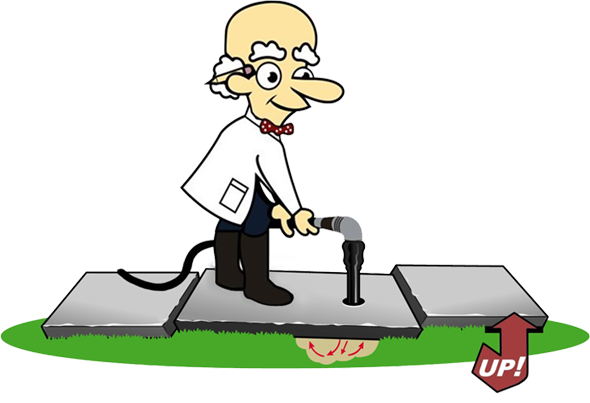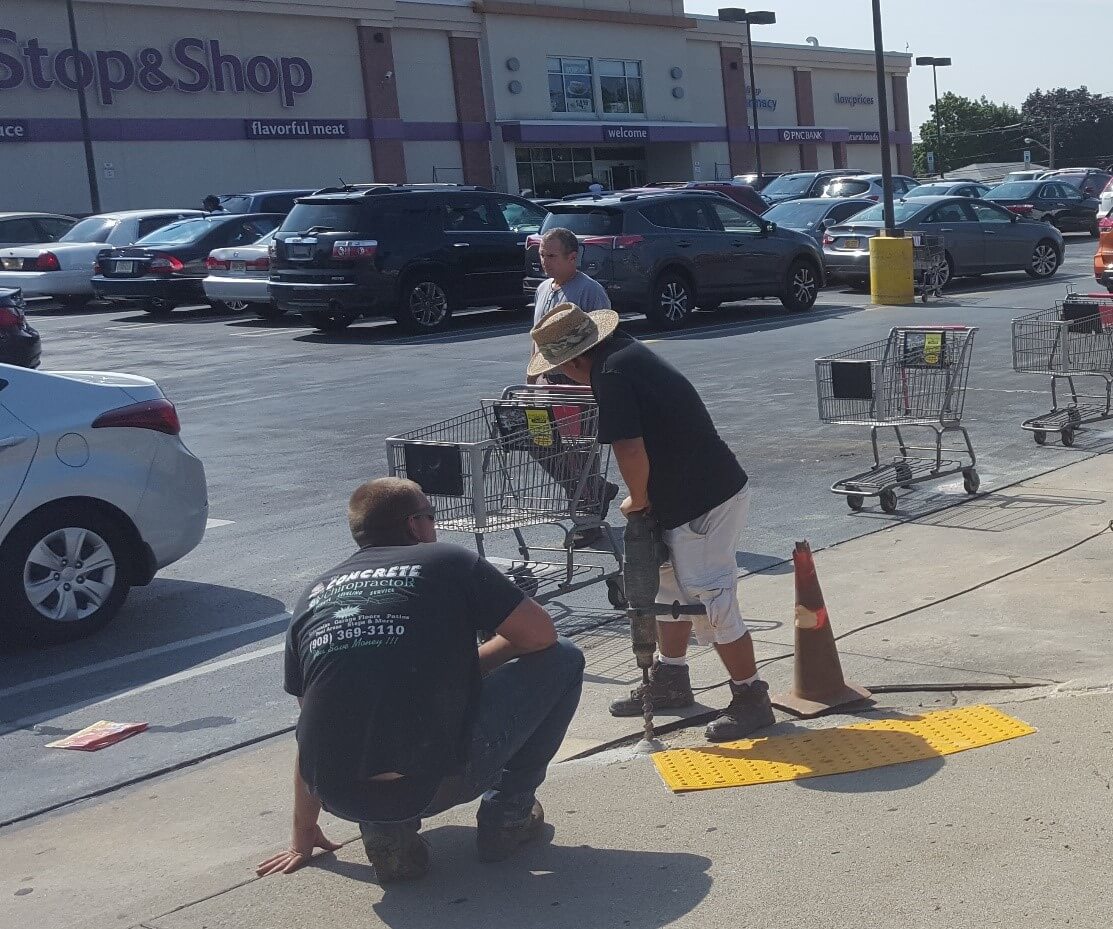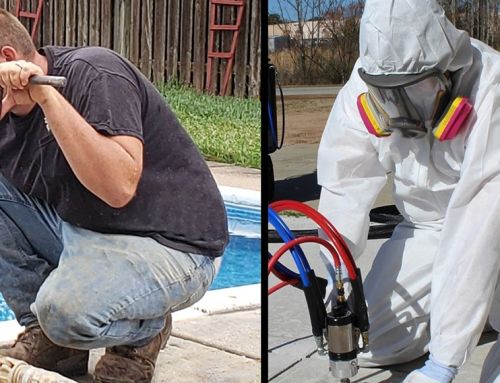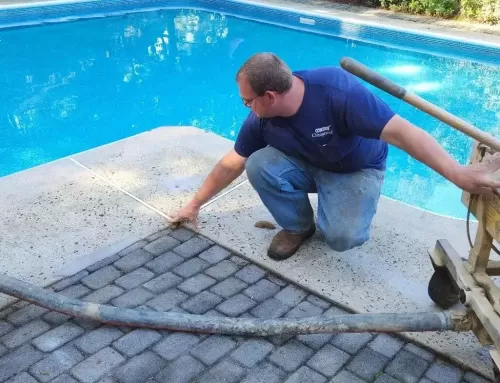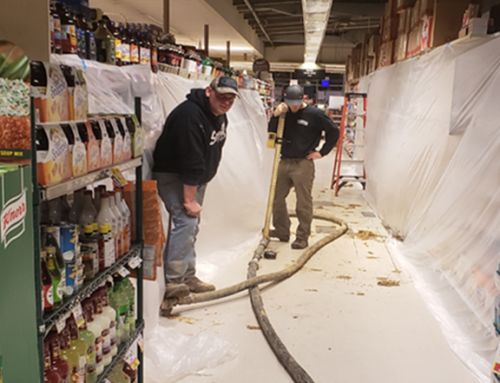IN THIS ARTICLE
Mudjacking, a common solution used to level uneven concrete surfaces for many decades, has gained popularity for its efficiency in addressing sinking or uneven slabs. Homeowners often turn to mudjacking to restore stability to their driveways, sidewalks, patios, garage floors, and other concrete surfaces.
One common question during the mudjacking process is, “How long does it take to dry?” In this article, we’ll explore the factors influencing the drying time of mudjacking services and what homeowners can expect.
The Mudjacking Process:
Before delving into the drying time, it’s essential to understand the mudjacking or concrete lifting process and what caused your slab to sink. Unlike a chemical process where foam is injected, mudjacking involves injecting a mixture of soil, water, and other materials (such as cement or limestone) beneath a sunken or uneven concrete slab. The injected material, often called slurry or mud, raises the slab to its original position, restoring the level surface of your sunken slabs.
Factors Influencing Drying Time:
- Mixture Composition:
- The composition of the mudjacking mixture plays a crucial role in determining drying time. Different contractors may use varying combinations of materials like soil, water, cement, and additives. Some mixtures are designed to set and dry more quickly than others.
- Weather Conditions:
- External weather conditions significantly impact the drying time of mudjacking. Warm, dry weather generally facilitates faster drying, while cold or humid conditions can slow the process. Extreme temperatures may also affect the curing process, potentially requiring additional time for the mudjacked surface to fully dry and cure.
- Project Size and Complexity:
- External weather conditions significantly impact the drying time of mudjacking. Warm, dry weather generally facilitates faster drying, while cold or humid conditions can slow the process. Extreme temperatures may also affect the curing process, potentially requiring additional time for the mudjacked surface to fully dry and cure.
- Project Size and Complexity:
- External weather conditions significantly impact the drying time of mudjacking. Warm, dry weather generally facilitates faster drying, while cold or humid conditions can slow the process. Extreme temperatures may also affect the curing process, potentially requiring additional time for the mudjacked surface to fully dry and cure.
- Project Size and Complexity:
- The size and complexity of the mudjacking project influence the overall drying time. Larger areas or projects with intricate details may require more time for the injected material to settle and cure. Contractors often provide estimated drying times based on the specific details of the job.
- Type of Soil:
- The type of soil beneath the concrete slab can impact drying time. Certain soil types absorb moisture differently, affecting how quickly the mudjacking mixture sets. Clay soils, for example, may retain more moisture, potentially extending the drying time.
Understanding the Stages of Drying:
Mudjacking involves distinct stages of drying, each contributing to the overall process:
- Initial Setting:
- The initial setting phase occurs shortly after the mudjacking mixture is injected beneath the slab. During this stage, the material begins to solidify, allowing for the raising of the concrete. This phase is relatively quick, often taking a few hours.
- Surface Readiness:
- The initial setting occurs rapidly, and the surface is typically ready for immediate use for foot traffic. Depending on the mixture and environmental conditions, homeowners can typically expect the surface to be ready for vehicle traffic within one to two days after the mudjacking process is complete.
- Curing Time:
- Curing refers to the process of the mudjacking material gaining strength and durability over time. While the surface may be ready for use, the full curing process of concrete or grout takes roughly 28 days to reach full strength.
Conclusion:
In conclusion, the drying time of mudjacking depends on various factors, including the composition of the mixture, weather conditions, project size, and soil type. Concrete and mudjacking grout are both porous and may not dry out in wet areas. This does not affect the long-term performance, with repairs being time proven to last for decades under normal circumstances. You can read more about How Long Does Concrete Leveling Last ?
Consulting with experienced mudjacking professionals, following their recommendations, and understanding the project’s specific details are essential steps in ensuring a successful and long-lasting mudjacking outcome. Concrete Chiropractor® is a trusted leading expert in concrete leveling, serving the New Jersey and Eastern PA area, so call for a professional evaluation of your concrete raising project.
- Garage Floor Raising and Coating: The Ultimate Guide - June 4, 2024
- Mudjacking Cost: 5 Factors That Affect It - April 10, 2024
- What is The Average Cost of Concrete Leveling in Belle Mead, NJ? - April 4, 2024

